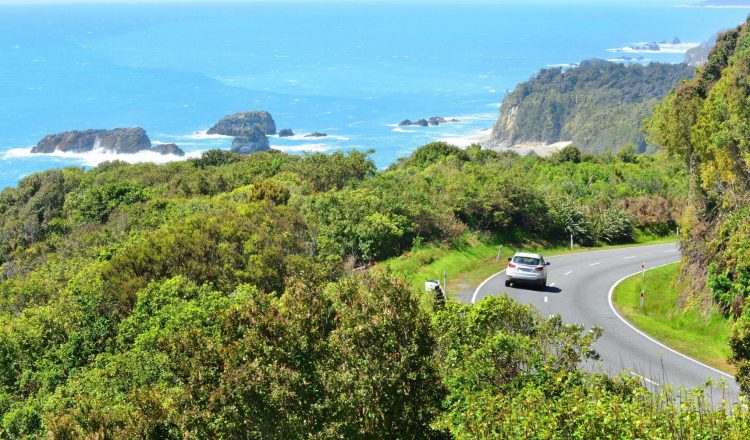터널 안전
터널은 편리하지만 좁은 공간으로 인해 탈출이 어려워 특별한 경우 위험을 야기시키기도 합니다. 이 때문에 운전자들은 터널을 통과할 때 안전에 각별히 신경 써야 합니다.
터널을 통한 주행을 위한 팁
- 정신 바짝 차리세요.
- 주행 차선을 유지하고 되도록 차선 변경을 피하세요.
- 제한 속도를 지키세요.
- 안전 거리를 유지하세요.
터널에서 사고가 났다면:
- 라디오를 켭니다.
- 라디오, 터널 내 비상 방송(public address system), 또는 표지판 메시지를 통해 나오는 지침에 따르세요.
- 대피해야 하는 경우, 즉시 차량을 두고 지시에 따라 출입구나 안전 장소로 빠르게 이동한 후 기다리세요.
뉴질랜드에서 터널을 지날 때 유의사항
올바른 운전자 행동 중 하나는 터널 내부의 사고 위험을 줄이는 데 다같이 노력해야 하는 점입니다. 뉴질랜드 교통부(NZ Transport Agency)는 운전자들에게 뉴질랜드 전역의 터널을 통과할 때 특히 주의할 것을 당부하고 있습니다.
터널을 지날 때:
- 각별한 주의를 기울이세요.
- 항상 제한 속도를 준수하고 교통 규칙을 따릅니다 – 터널 내 속도 제한 적용
- 앞차와의 안전 거리를 2초 이상 두세요.
- 터널 내 모든 사람의 안전을 위해 다차선 터널에서는 차선 변경을 되도록 하지 마세요.
- 표지판의 지시사항을 따르고 터널 내 속도 제한에 변화가 있는지 주의하세요.
- 특히 차가 많이 막히는 시간에는 급브레이크를 밟지 마세요. 교통체증이 증가됩니다.
- 터널 입구와 출구에서 차선들이 병합할 때 각별히 주의하고 충분한 시간을 두고 출구 차선으로 움직이세요.
- 기상 상황에 맞춰 운전하고 강풍이나 폭우가 쏟아질 때는 터널을 빠져나올 때 특히 주의하세요.
다음과 같은 경우 터널 진입 금지입니다.
- 연료 부족
- 차량이 고장날 수 있다고 의심될 때
- 안전하지 않은 화물을 싣었을 때 – 출발 전에 화물을 잘 고정했는지 확인해야 하며 그렇지 않은 경우 범칙금 적용 가능
- 사고 또는 비상 사태로 인해 터널 폐쇄
- 위험물 운송이 금지되거나 제한되는 경우 – 위험물에 대한 자세한 내용은 아래 설명 참조
- 차량 또는 적재물 터널 높이 초과 – 지역마다 터널 통과 높이 기준 다름
- 보행자, 자전거 또는 전자스쿠터 (산책로가 있는 마운트 빅토리아 터널 제외)
터널 진입
- 라디오, 기타 교통 정보 사이트에서 중요한 사항 업데이트
- 헤드라이트 켜기
- 선글라스를 벗기 (처방 안경이 아니라면)
- 모든 교통 표지판, 교통 신호 및 도로 위에 표시된 사항 준수
- 다차선 터널에서 차선 변경 금지
- 제한 속도, 교통 흐름대로 유지, 느리게 이동하더라도 앞차와의 안전 거리 유지 – 최소 2초 간격
터널 내 차량 고장 및 사고
터널에서 차량이 고장났거나 사고가 나서 차를 운전해 터널을 안전하게 빠져 나갈 수 없는 경우:
- 갓길 안전한 장소에 차를 세우고 가능한 한 교통의 방해가 되지 않도록 합니다.
- 비상등을 켜고 침착하게 사고 대응팀이나 경찰이 도착할 때까지 기다리세요. 교환원들이 터널에 있는 카메라를 통해 계속 확인하며 터널 내 방송을 통해 교환원의 지시를 받습니다.
- 화재 또는 대피 지시가 없는 한 자신의 차량 앞이나 교차로 출입구에서 안전하게 대기하세요.
- 걱정되거나 교환원이 자신을 보지 못한다고 생각될 경우, 터널 내 교통 흐름에 주의하면서 가장 가까운 응급 전화를 사용하여 터널 제어실로 연락하세요. 일부 터널에는 휴대폰으로 연락 가능한 번호가 표시되어 있습니다(Waterview call 0800 터널)
대피가 필요한 비상 상황이 발생할 경우 비상구 기호와 깜박이는 불빛을 찾아 안전한 출구 지점을 찾고 표지판을 따라가며 라디오를 통해 제공되는 지침을 따르세요.
터널을 통과 중 차가 막힐 때
- 머리 위 표지판에 표시된 지시 사항 찾기
- 라디오에서 중요한 교통 정보 수신 – 관리자를 통해 특정 메시지가 PA 또는 터널내 방송을 통해 전달될 수 있습니다.
- 창문을 닫고 에어컨을 켜서 공기를 조절하세요. 오래 정체되는 경우 엔진을 끄고 차량이 다시 움직일 때까지 기다립니다. 이렇게 하면 터널 내 매연의 양이 줄어듭니다.
- 긴급한 지원이 필요한 경우 갓길에 차를 세우고 가장 가까운 비상 전화를 사용하여 터널 제어실로 연락하거나(차에서 내리는 동안 교통 상황을 주의하여 확인), 현지 연락처가 기재된 경우 제어실 헬프라인으로 전화하십시오.
터널 화재
터널 화재 사고로 인해 발생한 연기를 터널 안에 있는 운전자들이 마시면 아주 위험합니다.
화재가 발생하면 즉시 차를 버리고 대피 경로를 통해 안내에 따라 출구를 찾으세요 가장 위험한 물질은 화재로 인한 연기입니다.
교통국은 터널을 모니터링하고 화재와 기타 사고들을 관리할 겁니다. 터널 내에 있는데 전방에 연기나 화재가 보인다면 관리자들은 화재경보 시스템, 터널 내 방송, 라디오, 전자표지판을 통해 긴급 대피 메세지를 띄우며 터널을 폐쇄하고 대피시킵니다.
터널에서 대피해야 하는 경우:
- 경로가 명확하면 즉시 터널 밖으로 운전하여 사고에서 벗어나십시오. 남을 도와주려고 멈추지 마세요.
- 경로가 명확하지 않은 경우, 엔진을 끄고 키를 차 안에 두세요.
- 현재 위치에서 가까운 출구로 나가세요.
- 터널 내 비상 방송을 통한 지침 사항을 잘 듣고 안전 장소에서 기다렸다가 응급 구조대의 추가 지시를 기다리세요.
차량에 화재가 발생한 경우:
- 도로 왼편에 차를 세웁니다.
- 시동을 끄고 차에서 내리는데 지나가는 차들을 조심하세요.
- 즉시 도움을 요청하세요. 111로 전화하거나 가까운 응급전화로 연락하세요.
- 이제 터널 관리자는 카메라로 사고를 모니터링하고 터널 내 비상 방송을 통해 통신할 수 있습니다. 관리자는 터널에 있는 사람들을 대피시키거나 침수 시스템을 사용하여 화재를 진압할 겁니다.
- 주어진 지시에 따르고 차로부터 멀리 떨어진 안전한 장소로 이동합니다.
.
터널 내 과속 카메라
과속 카메라는 경찰 소관이며, 사고 다발 지역, 잠재적 사고 위험이 있는 곳에 설치됩니다. 터널의 특성상 더 위험하므로 터널 내 과속 카메라가 있다면 운전자들이 규정 속도를 지키도록 강제하므로 사고 위험을 줄입니다.
터널에서 가장 일반적인 위험은 심각한 부상을 초래할 수 있는 차량 고장 또는 충돌 사고입니다. 이러한 위험이 예기치 않게 발생할 경우, 속도가 높다면 반응 속도는 줄어듭니다.
터널 내 사고는 인명, 교통 정체, 오염 및 수리 비용 측면에서 매우 큰 비용이 들며 터널의 밀폐된 환경로 인해 구조 작업 또한 복잡합니다.
위험물 적재 / 터널 내 규격 초과 차량
워터뷰(Waterview) 터널과 웰링턴 내 모든 터널에서는 위험물 운송이 금지됩니다.
리틀톤(Lytletton) 터널과 호머(Homer) 터널에서 위험물 운송은 허가를 받아야하며, 특정 시간에만 가능합니다.
빅토리아파크(Victoria Park) 또는 존스톤스힐(Johnstones Hill) 터널을 통해 다량의 위험물을 운반하는 경우 일반적으로 개방형 도로에서는 도로 운송 규칙에 따라 현수막을 부착해 표시해야 합니다. 위험물 적재 금지 표지가 있는 터널에서 위험물을 운반하는 것은 위법 행위입니다.

















































